For a lot of e-commerce businesses, cart abandonment contributes to significant revenue loss. The average cart abandonment rate is as high as 69.8% despite US e-commerce stores spending USD 23.50 billion on online advertising every year. High shipping fees, hidden charges, complex checkout processes, delayed delivery times, etc., are some of the most common reasons compelling prospects to take their purchase needs elsewhere.
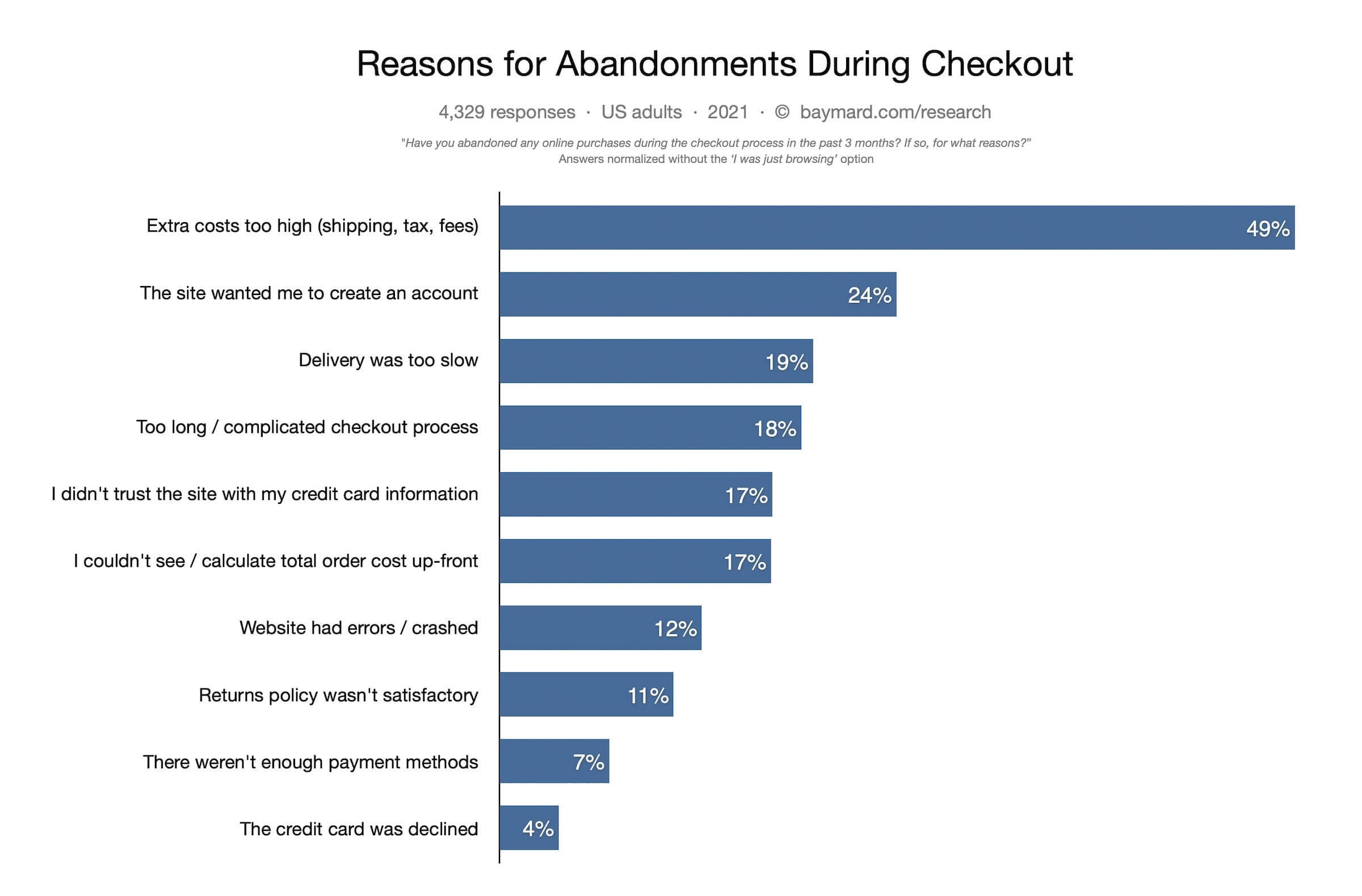
While cart abandonment as a business challenge cannot be completely eliminated, the good news is minimizing such instances to be minuscule is in your control. So without further ado, let’s dive into these persisting sales deterrents and the solutions you can employ to overcome them.
1. Surprise shipping costs
Customers expect businesses to be as transparent as possible. Studies suggest that more than half the customers view transparency as one of the most attractive qualities of a brand. So, it’s no surprise why close to a quarter of shoppers bail out because they can’t see or calculate their total order cost upfront.
While removing shipping charges may not always be feasible depending on your product mix, savvy players are finding that a great way to deal with this is to mention all costs upfront.

The solution:
- Consider incorporating a sticky banner that states the minimum value for free shipping.
- As far as possible include shipping costs as a part of your product price.
2. Mandatory account creation
This is another annoying reason spurring primed buyers to leave their carts abandoned. Making it compulsory to fill a form in the middle of a shopping journey can really douse a customer’s excitement, let alone hamper revisits. By removing this mandatory form, one online retailer saw its sales increase by millions.
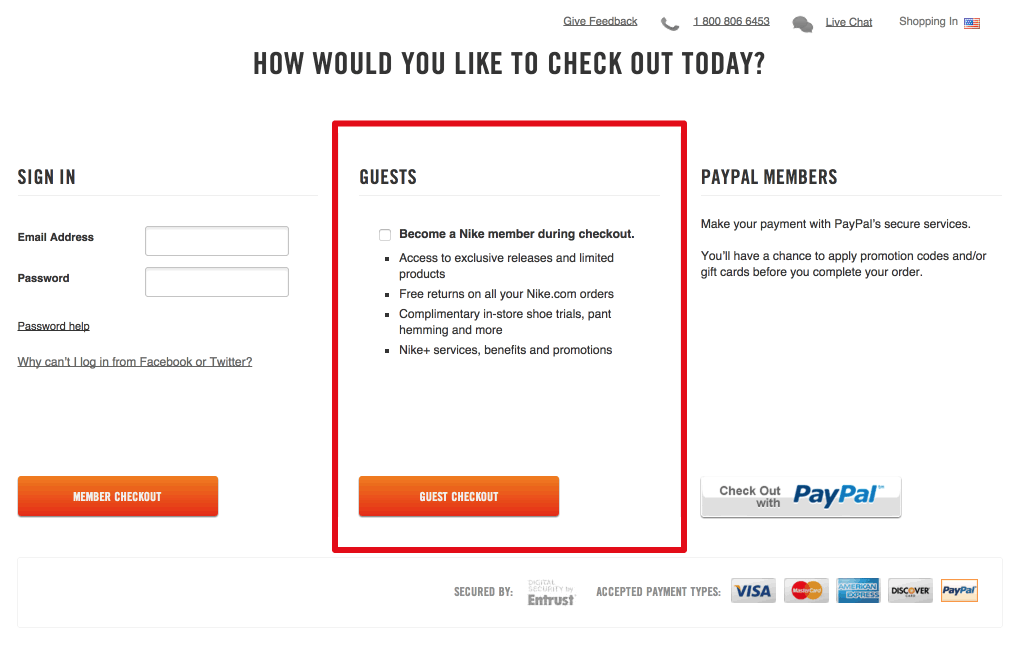
The solution:
- Offer a guest checkout option as depicted above.
- Ask only for their email and contact number. Once you have these you can reach out to them for more details later.
- Include these 2 fields as a part of the delivery details page so it makes sense as they would need an online receipt of their purchase and order tracking updates.
3. Website usability not intuitive and seamless enough
Very often shoppers leave your site because they can’t find what they were looking for. Poorly structured navigations, inaccessibility of filters like price, discount, brand size etc., lack of visibility of the final cost of a product from the get-go – all contribute to surmounting cart abandonment rates. Also as much as people enjoy shopping, making the finish line more visible in sight will ensure they stay poised enough to get there.
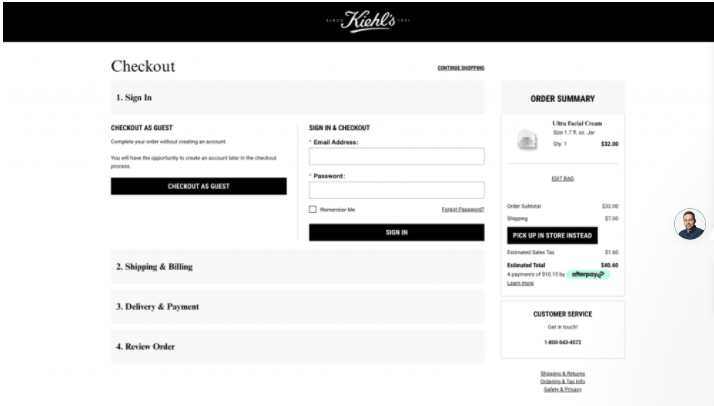
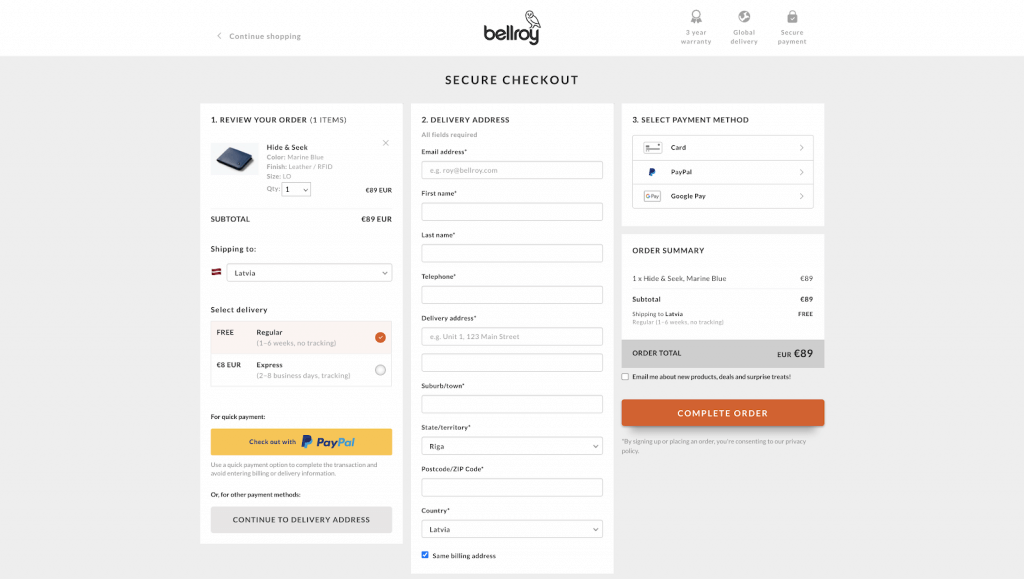
The solution:
- Carefully consider your customer’s shopping experience journey while designing your website.
- Ensure you are virtually handholding them and displaying the most critical information available like product price, brand name, expected delivery date, reviews etc., within the first couple of scrolls itself.
- Include a progress bar at the top of the page indicating how far they’ve come in their journey and how many steps are left to go.
- Try one of the following checkout page layout options, the first an accordion and the second a one-pager, to offer your customers maximum visibility into their last leap.
4. Website performance and security
Studies suggest shoppers will leave any website that takes more than three seconds for a page to load. A majority of these shoppers never return. Payment gateway security is another apprehension triggered by website errors and crashes often tainting your credibility as a brand.

The solution:
- Test your website performance and load speed to prepare it for high holiday traffic volumes.
- Ensure your secure payment certificates and trust badges can be seen at almost every step of the journey – PCI DSS, 3D secure for payments etc.
- Display relevant online reviews to fortify your website’s authenticity. 84% trust online reviews as much as personal recommendations.
5. Lack of seamless mobile customer experience
Despite the pandemic having people hunkered down since last year, smartphone traffic worldwide for retailers is higher (56.2%) than for desktop (34.5%). Yet, this mobile traffic is converting at less than half the rate of that on desktop, at 2.25% compared to 4.81% for desktop. These statistics are a clear indication of the money most online brands and retailers are leaving on the table. Customers expect a seamless and intuitive shopping experience regardless of device.
The solution:
- Ensure your mobile site design is responsive.
- Shorten your sales copy to be easily consumable.
- Keep the most important elements above the fold, so as to minimize scrolling.
- Make sure your buttons are large and easily visible to offer easy access for nascent mobile users.
- While designing your mobile pages ensure all the buttons needed to complete the transaction are within the ‘thumb zone’.
6. Looking for alternatives
Shoppers are always looking for maximum value for the money they pay for a product. This means they are constantly weighing in their options both online and in-store. Therefore if your website doesn’t offer adequate comparison with the other popular options within your product line, your shoppers are bound to keep switching between websites, thus often taking their sales elsewhere.
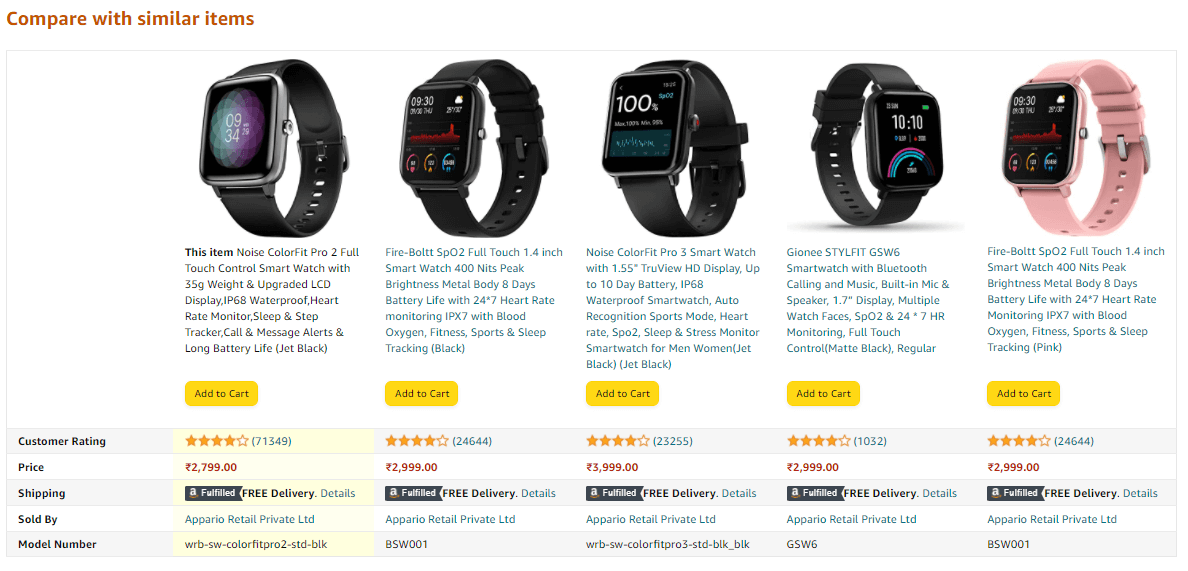
The solution:
To reduce cart abandonment a good practice is to pack in all the information and potential product comparisons shoppers would look for on the product page itself. This automatically elevates your e-store to a one-stop decision-making platform.
7. Discount codes not visible
Discount codes are difficult to remember and it can be a pain to dig up that email where they first spotted it. This often leaves shoppers frustrated and looking for better deals elsewhere.
The solution:
Dedicate a discount codes section before the payment page, that automatically generates all the available codes for the shopper to choose.
Though it may be impossible to recapture all the customers who abandon their carts, the figures prove it’s worth the small investment it takes to reclaim those potential sales. Very often, the reasons for abandonment are pertinent to your industry. To understand reigning customer preferences and how you can minimize and mitigate cart abandonment for your business, through timely and reliable e-commerce data, analytics and insights contact us.






